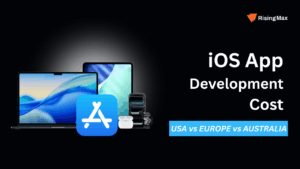The Blockchain is gaining popularity, and the business owner is moving towards the Blockchain to make their business more secure and free from the third-party commission. Blockchain helps the company improve and secure the transfers of funds, information, and data of any company.

The Blockchain became famous because of the cryptocurrency, and with time many other businesses are joining the platform. Usually, people are confused with Blockchain and Distributed Ledger technology. The era is of digitalization, but still, many people get confused between distributed ledger technology and Blockchain.

Although there is a massive difference between both of them still, people take both of them as the same thing because of some common factor. People with lesser knowledge usually make mistakes between both them.
Are both things almost similar to each other? Well, it’s a big No. Both are not at all the same. This blog will help make things clearer about Distributed Ledger Technology vs Blockchain.
How Blockchain Technology Can Benefit the (IoT) Internet of Things
Blockchain vs distributed ledger technology makes people confused, and even it is the hottest topic people want to know in detail. Both these things have the potential to change the future of technology.
Let’s learn more about the DLT and Blockchain.
What Is A Blockchain?
A blockchain is something like a distributed ledger that has specific technologies. Each of the data on the blockchain platform is immutable and cannot be hacked or changed. It creates an unchangeable ledger of the data in a decentralized network. Blockchain provides the ultimate security to all the data present in the ledger.
The critical contrast between Blockchain and DLT is the cryptographic marking and connecting of bunches of records within the record that forms a chain. Besides, there’s a chance for the open and clients to decide how a blockchain is organized and run based on the particular application of the Blockchain.
As it was true, Blockchain is a subcategory of a record. DLT is the umbrella innovation of Blockchain. However, later Blockchain became more famous than the whole idea of distributed record technology. But, many software engineers and IT experts are attempting to come out of the blockchain umbrella. Subsequently, individuals are on edge to know approximately the Blockchain vs. disseminated record innovation differences.
Challenges and Opportunities in Decentralized Smart Contract Industry
Blockchain is the subset of the distributed ledger where each block and node gets its duplicate from the record. Each time a client includes new information to the exchange, all the hash values within the form get updated. On the side of their points of interest, all the deals are ciphered sometime recently being included in the ledger.
What is a Distributed Ledger?
A distributed ledger is a database found over a few areas or among different members. In any case, most organizations are still utilizing a centralized database with a settled place. Unlike a centralized database, a distributed record is decentralized, which makes a difference in expelling the requirement for a central specialist or mediator to prepare, approve, or confirm transactions. Furthermore, these records will as it was being put away within the form after the parties included have come to a consensus.

Distributed Ledger Technology vs Blockchain
The features of both the technology sound similar to each other, but there is a considerable difference. One can notice the difference between the distributed ledger and Blockchain the distributed ledger technology is the parent system of the Blockchain. Blockchain is only one part of distributed ledger technology.
Let’s not make it too complicated to understand for everyone. In most accessible words, Blockchain is the somewhere as a distributed ledger but not exactly like it.
Let’s understand it with an example; then let’s assume that a soccer player makes a deal with a sports accessory, and the supplement gets more famous than the company because of the soccer player. This is the same situation with the Blockchain; the Blockchain gets more prominent than a distributed ledger. The distributed ledger can be considered the leading company, and Blockchain is one of the departments.
In the case of the distributed ledger, the consensus is an important thing. But in blockchain technology, developers can use multiple methods to get consensus that contains proof of stake and proof of work.
The Future Use Cases Of Blockchain For Cybersecurity
Tokens
There’s no requirement for tokens or cash in a dispersed ledger technology. In any case, you will require tokens to square and distinguish spam. Anyone can run a hub in blockchain innovation. In any case, running a full hub requires a significant arrangement which will be troublesome to oversee. Moreover, there are ordinarily a few token economies, which takes an essential part in blockchain innovation. Be that as it may, cutting-edge blockchain innovation is trying to find a way to take off the cryptocurrency shadow.
Implementation In Real Life
Usage is a tremendous calculation for Blockchain vs distributed ledger technology. Blockchain happens to be within the lead on this one. Due to Blockchain getting all the consideration from the exceptionally beginning, there are loads of executions in real life.
Too, numerous ventures have taken an enjoying to the nature of the Blockchain and gradually beginning to coordinate it into their frameworks. On the other hand, engineers, as it were, began to go more profound into the center of distributed ledger technology itself. There are different variations of DLTs within the tech world.
Be that as it may, there aren’t that numerous real-life execution based on those conveyed record innovation. But they are beneath advancement and will see the light of the day exceptionally soon. In terms of real-life usage, Blockchain has more ubiquity than DLT presently. In any case, the advertising is gradually going toward the complete concept of disseminated record technology.
Proof of Work {PoW}
In most cases, blockchains, as a rule, utilize the confirmation of work instrument. Be that as it may, there are other instruments, but they ordinarily take up control. On the other hand, the disseminated record does not require this sort of agreement, which makes them more scalable. Blockchain is fair a subset of conveyed records, and it has extra usefulness aside from the conventional DLT scope. Confirmation of work includes a critical contrast between distributed ledger vs. Blockchain.
Block Structure
One of the contrasts between Blockchain and disseminated record innovation is the structure. A blockchain, more often than not, comprises blocks of data. Be that as it may, this is often not the initial data structure of dispersed records. This can be since a disseminated record is fair to a database spread over a few hubs. But you’ll be able to speak to this information in various ways in each record.
Solana Project Development Company
Sequence
Within the Blockchain, one can discover all the pieces in a particular grouping. In comparison, Disseminated records don’t require a specific arrangement of information. This grouping of squares in DLT shifts Blockchain from any other conveyed record innovation.
Structure Of Blockchain
Once more, one of the contrasts between Blockchain vs distributed ledger innovation – is the structure. Blockchain comprises pieces of information. This structure isn’t honest with the excellent information structure of conveyed records. A dispersed record is a database spread over different nodes. However, you’ll be able to speak to this information in several ways in each record.

Advantages Of Using DLT Technology?
A distributed ledger offers all its information and exchanges within the database to the members, advancing transparency. They can decrease the exchange time to seconds and are handled each day, sparing businesses millions of dollars. Distributed ledger innovation too encourages expanded back-office efficiency and automation.
DLT employments blockchain is amazingly valuable for monetary exchanges. They decrease operational ineffectiveness(which eventually is cost-friendly). Greater security is accomplished due to localized structure and the reality that the records are settled in one location.
Moreover, Blockchain offers a way to securely and superbly make a delicate action log without outside interference. This comprises anything from universal monetary exchanges to partner records.
Money-related operations or activities are updated to offer organizations a more secure, computerized elective. That’s better than third-party bitcoin merchant companies.
One can utilize DLT or Blockchain by dodging these regularly discretionary, dull, archived, and expensive forms. Once you include information in a blockchain, it gets recorded on the arrangement. After a chain of exchanges over time, you pick up an exact and non-changeable review trail.
Why Start Your Business On Blockchain Platform?
Blockchain technology is the ultimate solution for each type of business. The technology is helping the company grow more effectively, with better performance and high-level security with lesser transaction cost and without the involvement of any third party.
Most upcoming businesses are adopting blockchain technology because the features of the Blockchain provide high security to the official documents and data of the company and are a perfect solution provider for saving the cost of the third parties.
Usually, when any business platform wants to transfer any amount of money to any second party, they have to pay the transaction cost to a third party like banks. But the blockchain technology has solved the problem, which helps the business platform save a lot of money that they have to give as the transaction cost.
The blockchain platform provides a peer-to-peer solution and consumes less time than transactions.
The blockchain platform comes with high-security coding, making the Blockchain the safest and most secure platform to take your business. Bitcoin is one of the most famous names available on the blockchain platform, and we never received any such news of fraud related to bitcoin and other cryptocurrencies.
Another reason why Blockchain is the most demanding thing is that big ventures and startups are ready to invest in blockchain technology because it reduces human error. As the whole process from initiating the transaction to delivering takes place on the block, the chances of human error get minimum.
Benefits Of DLT
Security
Actualizing a conveyed organize into an IoT biological system has intrinsic auxiliary security benefits. Centralized systems make a single point of disappointment for all associated administrations, whereas gadgets on a conveyed arrangement are more independent and not dependent on a central framework.
Any pernicious endeavors to modify or assault a shared database would require infiltration of a more significant part of associated hubs out of possibly thousands, making it essentially incomprehensible to hack. Security is a zone inside IoT that seem perhaps advantageous from empowering certain viewpoints of Blockchain that sets it separated from conventional DLT.
As a cryptographically based innovation, each square in a blockchain information structure is secured with a calculation outlined to anticipate information increase. This component is utilized in cryptocurrency trades nowadays to guarantee the reliability of budgetary transactions.
Reduces Connectivity
Whereas the server-client show of IoT may suffice, the volume of information being collected and transmitted within the future might outpace a centralized service’s capacity to prepare it.
Stages like Microsoft’s Purplish blue and Amazon’s Amazon Web Administrations have, as of now, started to convey conveyed cloud designs to address stack issues, in any case, for IoT companies that don’t rely on cloud framework or need to require advantage of P2P communications, the problem of network bottlenecks is an unavoidable challenge at scale.
For a few IoT arrangements, especially those spread over a large geographic zone, the P2P associations managed by DLT may be the foremost cost-efficient and compelling strategy for relieving benefit idleness.
Smart Contract
DLT benefits IoT arrangements that depend on intelligent contracts. When predefined conditions are met, keen contracts are a computation convention that naturally carries out an indicated activity between associated applications.
For example, shopper items like discuss conditioners might utilize sensitive contracts to carry out a programmed command to inform the producer that upkeep is required when execution checking is perusing ordinary exterior levels.
Reliability Of Data
For organizations utilizing IoT arrangements to gather and analyze key execution markers (KPIs) that require upgraded security, DLT is a self-evident advantage. As changes to a dispersed database are needed to experience numerous levels of DLT approval, the hazard of wrong or garbage information being devoured for analytics is enormously decreased. Having exceedingly reliable and secured information is especially imperative for IoT arrangements that span a supply chain, counting associated coordinates, associated development, etc.
Cost Saving
Working in a shared P2P economy, as changes to the database are prepared, each member hub on an IoT arranges employments of its claim, preparing control to approve each ask. With hundreds of thousands of associated seats contributing compute management to dealing with a single ask, this has noteworthy fetched sparing suggestions for companies investing expansive sums of cash in preserving, upgrading, and securing a centralized service.
Conclusion
I hope now you have a clear idea of Distributed Ledger Technology and Blockchain and how both things are different from each other. The distributed ledger technology is the parent structure of the Blockchain.
The Blockchain architecture is different from DLT, but the idea of formation is similar in both things.
Distributed Ledger Technology vs Blockchain is not at all complex just. Without the proper knowledge of technology, people were taking it as the same thing.











